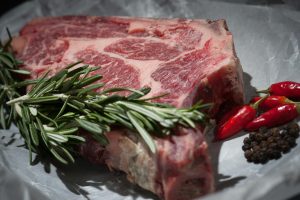Australian farmers encountered a range of conditions during the first half of 2024, according to Rural Bank’s Australian Agriculture Mid-Year Outlook 2024 report. Despite neutral ENSO and IOD conditions, dry weather across Western and South Australia posed significant challenges for winter crop planting and pasture growth. In contrast, the east coast experienced more favorable soil moisture levels.
Commodity markets
Commodity prices have returned to levels last seen in 2020. Notably, the livestock sector saw a 9% increase in prices, while prices in the cropping sector remained stable. The domestic and global economy’s slowdown was offset by a relatively low Australian dollar, bolstering export demand.
The forecast for the latter half of 2024 is broadly supportive for Australian farmers. Strong export demand and favorable price forecasts are expected to continue, although challenges remain, including consumer spending concerns and a dry start to the winter crop season. The potential development of La Niña later in the year could significantly benefit producers by improving rainfall conditions.
Climate
The Bureau of Meteorology predicts typical rainfall from July to September across most of Australia, with below-average rainfall expected in Tasmania. Cooling sea surface temperatures suggest a 50% chance of La Niña, which would enhance rainfall in eastern and central Australia and reduce frost risk, benefiting the cropping sector.
Trade
Global trade stability has positively impacted Australian agriculture. Expanded market access and tariff removals, especially for chickpeas and lentils in India, have boosted exports. Improving trade relations with China, particularly for beef and wine, also support demand. However, high global freight rates and geopolitical conflicts remain significant risks.
The economy
Domestically, household income is expected to improve due to tax cuts, though spending will likely remain low. Inflation is projected to moderate, but a potential interest rate hike looms. Farm input costs are easing, with lower fertilizer and diesel prices compared to late 2023. Rising unemployment may increase labor availability in Q4.
Key Points
- Mixed weather conditions impacted different regions, with dry weather in Western and South Australia affecting crops and pastures.
- Commodity prices stabilized at 2020 levels; livestock prices increased by 9%.
- A low Australian dollar supported export demand despite a slowing economy.
- Potential La Niña development could improve rainfall and crop conditions.
- Bureau of Meteorology forecasts typical rainfall, with a possibility of La Niña enhancing eastern and central Australian rainfall.
- Improved global trade stability and expanded market access, particularly with India and China, boosted exports.
- High global freight rates and geopolitical conflicts present ongoing risks.
- Domestically, improved household income but low spending expected; inflation moderating, with potential interest rate hikes.








